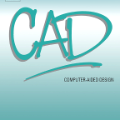Aiming to generate easy-to-handle assembly sequences for robotic assembly, this study tackles assembly sequence generation by considering two tradeoff objectives: (1) insertion conditions and (2) degrees of constraints among assembled parts. We propose a multiobjective genetic algorithm to balance these two objectives for generating assembly sequences. Furthermore, the method of extracting part relation matrices including interference-free, insertion, and degree of constraint matrices is extended for application to 3D computer-aided design (CAD) models, including deformable parts. The interference of deformable parts with other parts can be easily investigated by scaling parts. A simulation experiment was conducted using the proposed method, and the results show the possibility of obtaining Pareto-optimal solutions of assembly sequences for a 3D CAD model with 33 parts including a deformable part. This approach can potentially be extended to handle various types of deformable parts and to explore graspable sequences during assembly operations.
翻译:为了为机器人组装产生容易处理的组装序列,本研究通过考虑两个取舍目标处理组装序列的生成问题:(1) 插入条件和(2) 组装部件的制约程度;我们提出一个多客观的遗传算法,以平衡产生组装序列的这两个目标;此外,提取部分关系矩阵的方法,包括无干扰、插入和程度限制矩阵,将推广到3D计算机辅助设计模型,包括可变部件;可变部件与其他部件的干扰可以通过缩放部分很容易地进行调查;利用拟议方法进行了模拟试验,结果显示有可能为3D CAD模型获得最佳组装序列的Pareto最佳解决方案,其中33个部分包括可变式部件;这一方法可能扩大到处理各种可变形部件,并在组装操作期间探索可捕取的序列。





